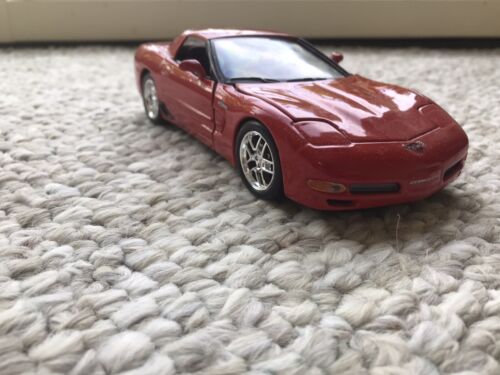
The sleeper cars are a great choice if you want a car that is both high-performance and low profile. These cars can be referred to as standard or economy cars but they have the power and performance to match. In this article, we will look at the Saab 9-2x Aero and Ford Taurus SHO. These vehicles are full of features that will delight anyone who is interested.
Audi 90 Quattro
Although sleeper cars are a long-standing part of the automotive industry, they are especially popular in the United States. The cars are fast and efficient, despite not having the most striking styling. You can modify sleeper cars to increase performance. Audi has a range of models to suit your needs. Our dealership is located in Malvern and proudly serves customers in the areas of Devon and Malvern.

Ford Taurus SHO
The Ford Taurus SHO engine was its main selling point for the first two generations. Its exterior was very similar to any first-gen Taurus. It was not a very beautiful car but it wasn’t ugly either. Some owners even claim that it is one the most attractive sleepers cars Ford has ever made. Below are five of the most notable Ford Taurus SHO sleeping cars.
Subaru Legacy Spec. Subaru Legacy Spec.
Subaru Legacy Spec. The Subaru Legacy Spec's sleepers car, B. This car is more like a lower-end version of the sedan than a high-performance model. It features 18-inch alloys, a dark metallic paint job, and a red leather interior. The Spec. The Legacy manual B is the only one with a navigation system. It also features a 5-speed manual transmission. It features the same driveline as the standard Legacy.
Saab 9-2x Aero
The Saab 9-2X Aero is the performance variant of the nine-years-old nine-seater. Similar to the Subaru WRX this car had a flat four engine with turbochargers, and a 5-speed manual transmission. The styling is identical to the Subaru WRX, with a similar appearance and firmer suspension. It also has softer dampers. Saab engineers also tweaked the suspension for better handling, and it has firmer springs and stiffer front control arm bushings. The 9-2X Aero, although slightly heavier than its sister vehicle, can still reach 0-60 in just five seconds.
Tesla Model X
The full Model X is larger and has 20-inch wheels and bigger brake calipers, but the sleeper version works better for daily commutes and longer distances. The Model X's low-profile tires, and the lower-profile wheels make it a poor choice for city streets. However, the performance version is better suited for track racing. These are just a couple of the important things to remember when choosing a sleeper for your Model X.

Nissan 350Z
The Nissan 350Z rear-wheel-drive sports vehicle is the Nissan 350Z. It was designed by Ajay Pantchal, from Nissan Design America. The vehicle's short deck and rear-wheel drive are appealing to enthusiasts. The cabin and cargo space are however small. It doesn't get much better than this. It also gets bad reviews from people who own one. We'll be looking more closely at the 350Z.
FAQ
What is the difference in a mechanic and an auto technician?
Both are related, but they are not the same. Both a mechanic and an automotive technician can repair cars.
A mechanic must possess good manual dexterity, and be able perform simple tasks efficiently. A mechanic must be able diagnose and fix problems quickly and accurately.
An automotive technician needs to be more technically skilled than a mechanic. They must be capable of reading blueprints and using tools such as drills, wrenches, etc.
They must be able and competent to safely perform complicated procedures. They need to be familiar with various types of engines and electrical system.
They should also be able understand how different parts interact.
As a result, a mechanic usually earns less money than an automotive technician. However, both careers offer great opportunities.
What qualifications do I need to become a mechanic?
You will need to pass several exams in order to become a mechanic. These include:
-
A general knowledge test
-
A practical exam
-
An apprenticeship test
These tests are intended to make sure you have a solid understanding of the basics of mechanics before you can start your career as a mechanic.
After passing these tests, you will be eligible to become a mechanic. But, you will still need an apprenticeship. This will involve training in your trade.
You'll need to attend classes and workshops to learn everything you need to know about repairing vehicles. Additionally, you will need to work with experienced mechanics.
For mechanic success, you'll need to be focused and meticulous. It is essential to pay attention to all aspects of vehicle repairs.
To become a successful mechanic you'll need patience. If you don’t love to follow instructions, this may not the right career path.
But if you love cars and enjoy fixing them, you could be very happy in this line of work.
Does it matter what college I go to?
Not really. There's no difference between colleges regarding getting into the automotive industry. But, there are better programs at some schools than others. Look elsewhere if you want something more niche.
How long is an automotive course?
An automotive course lasts for three years.
The first year is dedicated to theory and learning about cars. Practical training is the second year. You will learn to drive, fix engines and perform other tasks around the car. You will spend the final year working in a local garage to gain real-world experience.
What is the length of an apprenticeship as an automotive mechanic?
A three-year apprenticeship in automotive mechanics takes. This includes two year at school as well as two years as an apprenticeship. The first year is spent learning all aspects of the trade, including theory, practical skills, and safety procedures. This year, you will also learn how to safely and efficiently use tools. You'll spend the second year in on-the-job training, where you will gain experience in various trades. You will have the opportunity for formal training during these years.
The last year of your program will be spent earning qualifications and becoming certified. These include NVQs (National Vocational Qualifications), which are awarded after passing exams covering specific topics within the industry. Additionally, HNCs are Higher National Certificates that cover general subjects such management, customer service, and business administration. For those interested in pursuing certain trades, City & Guilds certificates are available.
Statistics
- According to the BLS, total auto technician employment is expected to exceed 705,000 by 2030. (uti.edu)
- 52% of Mechanics in the United States think their salaries are enough for the cost of living in their area. (indeed.com)
- According to the BLS, the median annual salary for automotive service technicians and mechanics in the United States was $44,050 in May 2020. (uti.edu)
External Links
How To
How to properly diagnose your vehicle for repair
Before you can determine if your car requires repairs, it's important to first analyze the symptoms. Follow these steps to properly diagnose your vehicle.
-
Check engine lights. Check the dashboard light indicators such as the engine light indicator, the oil pressure gauge, the battery light indicator, the coolant temperature gauge, and the RPM gauge. If any of these indicators have been flashing continuously for several days it could mean that there is something wrong with your vehicle.
-
Check the treads of your tires. Tires with worn treads could cause problems when handling or braking. Also, inspect the treads of your wheels. They should be clean, and they should be smooth. To do this, remove the wheels and take them out. Check the tread condition with a flashlight.
-
Check the level of brake fluid. It is important to keep track of how much brake fluid you have in your car. This will ensure your brakes function properly. If the brake fluid level is low, your brakes might fail when you apply pressure to them.
-
Check the suspension system. It is common for vehicles to have a suspension system which absorbs shocks or vibrations. It gives you better control and allows for smoother accelerations and decelerations. You might notice a wobbly feeling or uncontrollable shaking in your vehicle if it has a problem with its suspension. You can test if your vehicle has a suspension problem by putting weight on either the front or back axle to see how it moves.
-
Take a look at the steering column. Steering columns connect the steering wheels to other parts of the vehicle. Steering columns can be damaged by accidents. You should replace the steering column if it is loose or weak.
-
The exhaust pipe should be observed. Exhaust pipes help move gases from the combustion chamber to the atmosphere. Your cabin will be effected if your exhaust pipe cracks or leaks. Additionally, your tailpipe should be fixed immediately if it is bent.
-
Check under the hood. Check under your hood for any unusual or missing components. You could have fluids leaking from the engine. You should also contact a professional technician if there is an unusual odor coming from the engine compartment.
-
You should inspect your air filter. The outside environment can collect dust and other debris in your vehicle's air filters. A dirty air filter causes your vehicle to run poorly. Replace your air filter regularly.
-
The fan belt should be checked. The fan belt is the link between the engine and the transmission. If it breaks, the engine won't turn over. The process of replacing the belt is straightforward. All you need is a screwdriver and some pliers.
-
The radiator hose and hoses should be checked. The radiatorhose carries water from your radiator to the engine. It can become cracked or damaged and leak hot liquid onto your engine. Repairing the hose is easy with a pair of needlenose pliers or a small wire brush.
-
The windshield wipers should be checked. Windshield wipers use electricity to remove snow and rain. If they stop working, streaks could be left on your glass. Simply change the washer oil to fix the problem.
-
The battery cables should be checked. Your car's electrical system is powered by batteries. Before you change batteries, disconnect the positive cable. Failure to do so can damage your alternator.
-
You should check the headlights. The headlights provide illumination for the road ahead. If they don't work properly, it can cause poor visibility. To check if the bulbs have gone out, you can inspect them.
-
Make sure you have your lights on. When you approach them at night, the lights warn other drivers. It could cause distraction and even lead to an accident if it doesn't work.
-
Inspect your brakes. Before you get in a car accident, your brakes will be slowing down your vehicle. If the brakes fail to work correctly, your car could lose control and collide with another vehicle.
-
Change the oil. Oil keeps your engine lubricated. It protects metal parts and prevents them from wearing too quickly. Changing the oil every month is recommended.